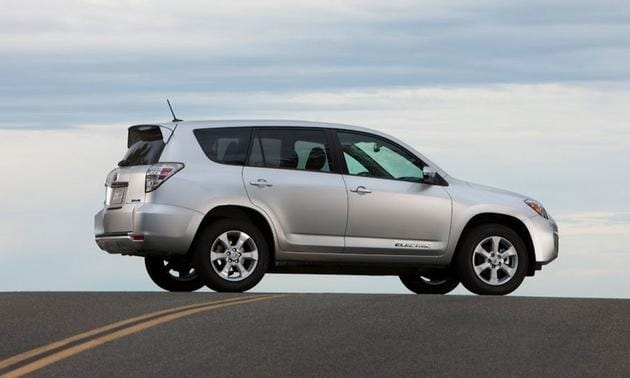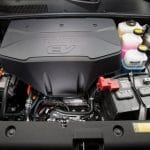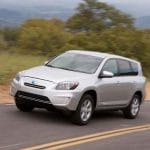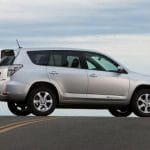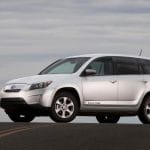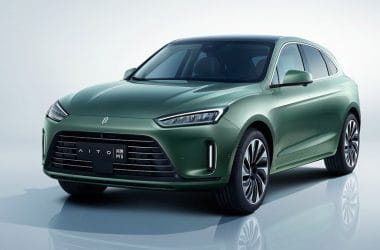What is it?
The 2012 RAV4 EV is Toyota’s second-generation electric vehicle that is based on its popular compact crossover. This time, development was done in with assistance with Tesla, which supplied engineering know-how. The result is a powerful-feeling vehicle with excellent responses and a pretty refined sense of integration.
Toyota equipped this new EV with normal and sport power settings (normal allows 218 lb-ft of torque, sport a full 273 lb-ft). Top speed in normal mode is 85 mph, while selection of the sport mode extends that to 100 mph. Battery recharging is also available at two levels, 35 kilowatt-hours and 41.8 kilowatt-hours, the latter charging to full battery capacity but possibly reducing the lifespan of the battery.
With a generous 129-kilowatt battery, the new RAV4 EV has a range conservatively rated at 100 miles. Elaborate range-estimation algorithms and dashboard displays show how the range might be extended by switching off the air conditioning, or changing it to one of its more economical settings (there are three: eco-low, eco-high and normal).
In its bid to extend the RAV4’s range, Toyota made several aerodynamic upgrades to the car, including a new rear spoiler, a flat underbody battery tray and various fairings, resulting in a drag coefficient of 0.3 flat. Necessary additions to any EV include electric power steering and an electric HVAC compressor, so the RAV4 has them.
To complete the package, the car’s exterior was decorated with Toyota’s blue eco insignia and studded with high-efficiency lights. Inside the car are manually adjustable heated seats with active headrests, an Optitron multifunction instrument cluster and a buttonless center touch screen with Toyota’s Entune telematics package.
What is it like to drive?
Everyone on the drive was impressed by the car’s performance. Response to the accelerator is emphatic and muscular, and the RAV4 EV has no problem seeing off cars in the next lane. The torquey electric motor pulls hard at any speed, emitting an almost turbolike whine as it does, and you soon stop thinking about the car as an electric vehicle. Instead, you drive it exactly as you would a reasonably powerful car of any description.
Accompanying the competent powertrain is a refined chassis. The ride is poised and comfortable, with just an occasional heaving motion on undulations to remind you of the 845-pound lithium-ion battery pack under the floor. Still, at just 375 pounds more than the RAV4 V6, the new EV handles well, and braking feels strong.
The electric power steering occasionally reminds you that it isn’t a hydraulic assist system, but it’s no worse than many internal-combustion-engine cars out there, and the car is surprisingly fun to drive. Its good range allows an owner to drive in typical energy-conserving EV fashion in most circumstances, optimizing braking regeneration and avoiding heavy applications of power. But you can also stand on the accelerator when the occasion demands it.
Accordingly, Toyota’s sales plan is modest. The company expects to move just 2,600 units in three years, mainly in California but possibly also in the other ZEV states.
From: autoweek.com


